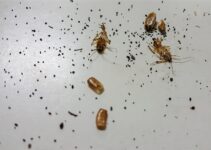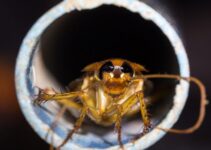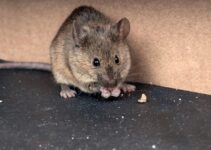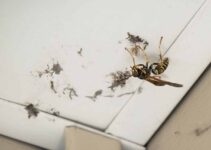The use of traps is one of the most popular ways to control rodents. They are easy to set up, very effective, and require bait to lure mice. Common baits include peanut butter, fresh bread, and fruits.
When a mouse trap proves ineffective after several trials, there are factors to be considered. Aside from the mouse trap being faulty (which is less likely), there are simple adjustments you can make during setup.
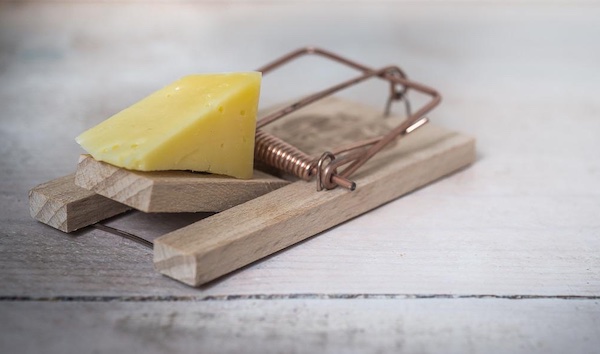
Why Your Peanut Mouse Trap is Not Working and What to Do
1. Handling Peanut Butter with Bare Hands
Mice naturally have a great sense of smell, hence, can perceive human scent on peanut butter placed on a trap with bare hands. To the mouse, this bait is contaminated and should not be touched, resulting in no capture for your trap.
What to do: When setting up your peanut butter mouse trap, use a clean pair of protective gloves. Using a pair of gloves to place baits in the bait area renders them uncontaminated and enticing to mice.
Aside from keeping baits pure, the use of protective gloves during mice-related activities protects you against infection and other health hazards. If your fingers get snapped by accident, these gloves can also mitigate the impact.
2. Placing Traps in Open Areas
If you place your trap in an open or usually crowded space, it will likely not capture any mouse.
What to do: Place traps in dark areas of your home and where they are most active. You should also place traps in a direction facing a wall because mice move side by side with walls. This increases the chance of mice locating the peanut butter.
You may also set up more than one trap. Ensure they are well-spaced (2-3 feet preferably) to accelerate rodent control.
3. Using Too Much Peanut Butter
The use of excess peanut butter can also make your mouse trap ineffective. When you use too much peanut butter, remnants of the product will likely be scattered all over the floor or around the trap.
This result in the mouse feeding on those excesses instead of going for the bait. In most cases, your trap gets triggered for nothing.
What to do: Place just a pea-sized amount of peanut butter on the designated bait area. This way, the mouse has no choice but to step on the trap in an attempt to reach the bait.
4. Wrong Type of Trap Isn’t Working
Sometimes snap traps with peanut butter (as bait) might not be as effective as glue traps with peanut butter and vice versa.
What to do: If one type of peanut trap is not getting the job done to your satisfaction, you can always try other options or combine options.
There are a variety of peanut butter traps in the market. You can explore based on size and how infested the target area is. For highly infested areas, peanut butter glue traps are better as they can kill multiple rodents at once.
5. Not Changing Bait Regularly
The aroma of peanut butter is what does the magic. Failure to change the peanut butter regularly will make it less palatable to mice.
What to do: Change the bait every 3-5 weeks to keep it fresh and palatable to the mice.
6. Underestimating Mice
Mice are not just extremely sensitive, they are very smart. They may likely avoid your traps within the first few days just to make you feel like your trap is not working (if you underestimate them).
What to do: Be smarter. Place unset traps with peanut butter for mice to enjoy for a few days. They will get used to it and get caught once you switch the game.
How Do You Know When All Mice Are Gone?
This is a key question related to DIY mouse traps. It is one thing to capture and dispose of mice, it is another to be sure they are all gone. Here are signs to watch out for:
No mice sightings: Once the situation changes from regular sighting to no sighting, it is proof that your rodent control method is effective.
No New Damage: Despite their small size, mice can damage wood, plastics, and other materials. The moment you notice a new trend of no damage, they might no longer be in your home.
No Droppings: This is the fastest way to know if mice still exist in your home or not. Clean old and dry droppings and watch out for fresh ones. The absence of fresh droppings is a strong indicator that they are gone.
No More Scratching Sound: Mice also love to make run around at night, making disturbing noises. Once this no longer exists, it means you have successfully driven them out.
No More Smell or Feces: Mice urine and feces usually create a pungent odor. They use this smell to communicate socially and for reproduction. Once this odor dissipates over time, they are probably gone.
References
- https://pestkill.org/mice/traps-not-working/
- https://www.cdc.gov/rodents/prevent_infestations/trap_up.html
- https://www.thekitchn.com/bleach-cleaning-tips-things-to-avoid-257741
- https://insectcop.net/how-to-catch-a-mouse-when-traps-dont-work/
- https://www.victorpest.com/articles/mouse-trap-mistakes
